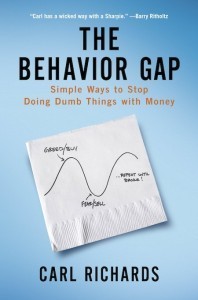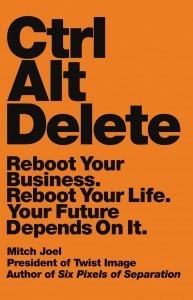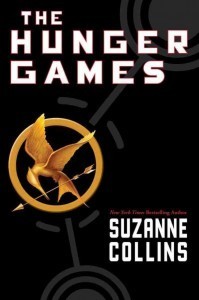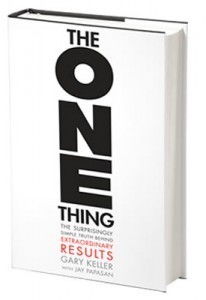Jacob S Paulsen's Blog, page 15
January 30, 2014
The Behavior Gap by Carl Richards
 Carl’s best selling book is about making smart and rational decisions about money. The principles of removing emotions from important decisions does apply beyond just financial decisions.
Carl’s best selling book is about making smart and rational decisions about money. The principles of removing emotions from important decisions does apply beyond just financial decisions.
As an example we all know that we should buy investments low and sell high but most people do the opposite. When the market is strong people think it’s a good time to buy. When it tanks fear tells us to sell. It’s not that we are stupid, as Carl says, we are just built to avoid pain even when it’s not rational.
Carl teaches that we all are motivated by fear and greed. Most of us are motivated by both but generally lean toward one or the other. This is why so many financial planners have their clients take some sort of test to judge their tolerance of risk.
The online conversation in my book group was interesting as it turned to a chat about the various life arenas where it is difficult to make logical and rational decisions in the face of great emotion. Thinking of the various decisions in our careers, business, relationship, shopping, and the way we spend our time.
One of the other strong lessons this book cemented for me is the importance of having a third party (councilor, adviser, friend) to help us make the more difficult decisions where emotions tend to cloud our judgement.
–>Look at book on Amazon (affiliate link)






January 10, 2014
Ctrl Alt Delete by Mitch Joel
 In December I read the newest book by “Media Hacker” Mitch Joel. This was followed up by a live Q&A call I hosted with Mitch. Ctrl Alt Delete, despite its name is a positive book about opportunity in the new world of digital media. The book is seemingly split into two; first addressing businesses and organizations and then addressing individuals.
In December I read the newest book by “Media Hacker” Mitch Joel. This was followed up by a live Q&A call I hosted with Mitch. Ctrl Alt Delete, despite its name is a positive book about opportunity in the new world of digital media. The book is seemingly split into two; first addressing businesses and organizations and then addressing individuals.
The book really addresses the idea that media is changing so fast that we all have a need of starting afresh with a new strategy, new plan, and new tools.
One of the biggest lessons for me were Mitch’s thoughts about Utility Marketing. Digital media has forced companies to figure out how they can stop broadcasting messages and advertising and start creating more value to their customers. By becoming useful we create a relationship with the consumer.
Mitch also speaks about how in today’s world we are all publishers. Publishing content is no longer reserved for newspapers and broadcast companies. This wave of content forces us to stand above the noise and dig deeper to create value.
Mitch reiterates the importance of mining data and making informed decisions. Even small local businesses today can quickly gather fast and relevant data about their product, market, and customers to help grow the business faster and improve it’s service or product.
These are among some of the great concepts discussed in the book. I would recommend this book to anyone who is overwhelmed with the introduction of digital media and to anyone who works in the media or marketing industry.
The book is available in Hardcover, Paperback, eBook, and Audio






January 6, 2014
Audible Could Be Your Best Tool This Year
While tools aren’t as important as strategies and systems they still play a big part in helping us be productive and hit our goals. Audible is one of my favorite tools.
 Audible is an Amazon.com owned company that is to audio books like Amazon Kindle is to eBooks. Audible is an application that you can download for free onto your smartphone, computer, or tablet that allows you to listen to audio books available from the Audible library. You can purchase individual audio books on demand or you can pay for a monthly Audible membership that comes with a certain number of credits to buy the books you want when you want them. When you buy a book you own it forever. Audible has the largest audio book selection in the world. As a publisher, they have many audio books that you can’t get anywhere else.
Audible is an Amazon.com owned company that is to audio books like Amazon Kindle is to eBooks. Audible is an application that you can download for free onto your smartphone, computer, or tablet that allows you to listen to audio books available from the Audible library. You can purchase individual audio books on demand or you can pay for a monthly Audible membership that comes with a certain number of credits to buy the books you want when you want them. When you buy a book you own it forever. Audible has the largest audio book selection in the world. As a publisher, they have many audio books that you can’t get anywhere else.
You can listen to your audio books on your phone, tablet, computer, or you can burn the book onto audio cds and listen to them in your car’s CD player. When you pause the book Audible syncs your position in the cloud so that when you pick back up on any of your devices you start right where you left off.
Audible also allows you to increase the playback speed to 1.25, 1.5, 2, or 3 times the speed. 3 Times the speed is a little crazy but 2x is manageable if you are well focused 
If you have goals this year to read more or to work on your personal development you may find that Audible is the tool to get you there.
–>Click here to check out Audible and Get a Free Book (Affiliate link – They pay me if you click on this and sign up)
–>Click here to check out Audible (Non-Affiliate link – not tracked and I don’t get any commission)






January 2, 2014
Hunger Games Trilogy Book Review
 I don’t read very much fiction. My reading list of business, self-help, and US history tends to be long enough that its only occasionally that the pressure of society (or my wife) is strong enough to get me to pick up the newest critically acclaimed novel. When this does happen I read them with a different motivation or intention than I suspect most people do. I don’t crave or desire entertainment from any of my reading. Even with fiction, I want to be inspired and educated and the best fiction stories do both.
I don’t read very much fiction. My reading list of business, self-help, and US history tends to be long enough that its only occasionally that the pressure of society (or my wife) is strong enough to get me to pick up the newest critically acclaimed novel. When this does happen I read them with a different motivation or intention than I suspect most people do. I don’t crave or desire entertainment from any of my reading. Even with fiction, I want to be inspired and educated and the best fiction stories do both.
Hunger Games, Catching Fire, and Mockingjay by Suzanne Collins made up a story that still has my head spinning even a few days after finishing. Intending to tell you enough to inspire, while holding back enough to prevent from spoiling the story, is a challenge I’m willing to tackle.
For me, this is above all else a story about the nature of humanity, the human need for power, and the individual struggle of discovery one’s identity, deeper purpose and place in the games of life. The story is different from many of the traditionally popular literary epics that tell a story of Good VS Evil (Star Wars, Lord of the Rings, Harry Potter, etc). In The Hunger Games the good guys and bad guys are not so easily discernible and this turns out to not be a story about a triumph over evil.
The story tackles the age old debate around the sanctity of human life. How easily we justify the taking of life in order to save a greater number of lives. “The Greater Good” debate has allowed mankind to justify monstrous acts as well as smaller more evil acts as well. It is indeed a fuzzy place where man tries to justify the loss of life and yet we know that it often must be in order to maintain the freedom of others. In the Hunger Games, the Capital City of the country conducts these games of death in order to keep the various districts in check against a potential war and uprising. When the war comes the good guys don’t think twice about the death they have to inflict in order to restore freedom. This seemingly cold position between the rock and the hard place forces the lead character to question the sanity of both sides of the debate.
The author does such a good job of pulling us into the lead character to understand and identify with her humanly flawed personality. We go on a journey of self discovery as she (Katniss) tries to understand survival, love, and purpose. This led me to consider how many people in our world truly don’t know what their own deeper purpose really is. As Katniss attempts to understand who she is and what she must do she becomes indefinitely lost in trying to understand WHY she is. What is her deeper purpose in life. As she discovers her purpose she begins to understand what she must do and how she must do it. It is the same for each of us.
I read all three books in December of 2013 and while I enjoyed the story as a whole I was often frustrated or crushed. These are signs of being sucked into a powerful read. The story wasn’t perfect. It had its flaws, and as it turned out, was never meant to have a happy ending. I’m not sure if it inspired me. It made me think about some critical ideas and questions and I suppose that is enough. On the bad side the last book is bound to leave the reader broken. You become so invested into the characters that you can’t help but feel empty and lost when the book details the breaking of the lead characters followed by an epilogue of only a few pages that leaves you to imagine a semi-fuzzy return to life by the same.






December 31, 2013
Strategies Tools and Systems – An Overview
 One the biggest hangups that appears to hold people back from hitting goals and achieving success is the confusion that surrounds strategies, tools, and systems. People tend to only focus on one of these three when they plot out a new goal or idea. I think the best way to explain my thoughts is to give some examples. Here we go.
One the biggest hangups that appears to hold people back from hitting goals and achieving success is the confusion that surrounds strategies, tools, and systems. People tend to only focus on one of these three when they plot out a new goal or idea. I think the best way to explain my thoughts is to give some examples. Here we go.
Example 1: Finances and Budget
Lets say you want to start keeping track of your spending and your finances better.
Strategy: I’m going to determine what my different spending categories are and plan out how much money I can allocate to each of those categories in order to ensure that I can pay myself (save) sufficient to hit my financial goals.
Tool: I’m going to download a new app on my phone, buy a new notebook, or access the reporting dashboard on my online banking so that I can see my spending and see if I’m in line with my strategy.
System: I will check my tool each week or day or month and review where I’m at against my budget and goals so that I can make adjustments.
With this example I talk to a lot of people who have this type of financial goal but they generally only consider one of the three components. You must have all three in order to succeed.
Example 2: To-Do Lists and Productivity
Lets say you want to use a to do list in order to make sure you get everything done and to better prioritize your many tasks.
Strategy: I’m going to make sure everything I need to do makes it onto my task list. I will use the list as a way to mind dump my stress and make sure nothing falls through the cracks.
Tool: I’m going to carry around a notebook, download an app on my phone, or record voice notes on a audio recorder.
System: I will open and review my task list during breakfast and lunch as well as during other breaks during the day when I have 15 minutes time blocks that can be allocated to a task.
Example 3: I Want My Children to Learn to Clean Up
Strategy: I’m going to find a way to give my children an incentive to clean up while teaching the importance of order and cleanliness.
Tool: I will make a sticker chart where they get an ice cream treat when they clean up 10 times or I’m going to dedicate 15 minutes at the end of each day before bedtime for picking up.
System: On a daily basis we will sit down as a family and review how we did.
How else do you see these three components playing together in what you do? Do you often employ these without thinking about it? Where else can we apply this formula to achieve increased productivity?






December 13, 2013
Content Strategy Magic Question
 I call it the magic question because it puts everything else into perspective. When I talk to advertisers and business owners who are trying to build an online audience around their brand, product, or events the conversation almost always come back to content. Content is at the core of the three Cs of internet marketing and without it no amount of great paid ads, SEO, or awesome products has any legs.
I call it the magic question because it puts everything else into perspective. When I talk to advertisers and business owners who are trying to build an online audience around their brand, product, or events the conversation almost always come back to content. Content is at the core of the three Cs of internet marketing and without it no amount of great paid ads, SEO, or awesome products has any legs.
The magic question is:
What content could we create on a regular basis that would be valuable to our target market that they may not find anywhere else that is relevant in part to our main product or service expertise?
Answer that question and start creating. If you are a plumber you need to stop sharing coupons and customer testimonials on Facebook. Your blog needs to stop talking about you and your service and start providing valuable content for your target consumers. So, the plumber may consider having a blog that is all about owning your own home with a focus on home maintenance.
What Does This Mean for Branding?
It means you need to build your content around a brand that talks to the valuable content you create. So, instead of just calling your blog, “our blog,” you might call it the “Cleveland OH Home Maintenance Blog.” Instead of calling your Facebook Page “Joe’s Plumbing” you should call it “Cleveland OH Home Maintenance.” The same is true of your Twitter and YouTube. When I tell clients this they also push back concerned that taking their business name out of the brand will lessen the effectiveness. This isn’t the case. Use the description, the cover art and the background (Facebook/Twitter) to tell the audience that the Facebook/Twitter page is powered by your brand.
The Truth That You Have To Accept
Its hard to hear but the truth is that people don’t care about your company or brand. A very few select number of your clients or customers are going to care enough about you to follow or like you on social media. First you must brand yourself as a source of content your target consumer finds valuable. Then show them that you care by providing that quality content.






November 24, 2013
I Dare You to OWN UP
Everywhere I look I see finger-pointing and accountability avoidance. Business, politics, and anywhere else where a group of humans are forced to interact for mutual benefit. Its starting to make me sick.
 Have you ever stopped to ask, “What is it about admitting fault or weakness that is so difficult for people?” “So difficult for me?”
Have you ever stopped to ask, “What is it about admitting fault or weakness that is so difficult for people?” “So difficult for me?”
The Greatest Barrier is Denial
The first reason we tend to not hold ourselves accountable for our mistakes is because we don’t think we have made any. This strong denial is often rooted in pride or fragile self perception. We don’t know how to act and live inside of our own skin if we were to become vulnerable. We live convinced that we only withstand the harsh winds and storms of life because our outer shell is too tough to penetrate. In our sub-conscious we think of weakness in the armor as a threat to our identity.
Next Comes the Fear of Reprisal
Perhaps we often avoid accountability because we don’t want to get in trouble with our boss, our constituents, or our friends. This only seems natural but of course it always backfires. We don’t want the people who vote for us, pay us, or choose to be involved with us to lose respect or feel that we can’t be trusted. In order to stop the behavior we must understand the true consequence of the action. Nobody can handle being with or working with someone who can’t be accountable. Those who avoid accountability inevitably drive their own integrity into the ground and make themselves easily replaceable.
Third Comes the Environmental Reinforcement
Our environment tends to not lend itself to encouraging accountability. We feed off of each other’s poor behavior and are taught that its better to sweep something under the rug and just move forward. We see people throw the person not in the room under the bus and we fall into the patterns of behavior.
In addition, sadly the more successful an individual the greater their tendency to truly believe that they can’t make mistakes. Their environment re-enforces the belief. Says Marshall Goldsmith, best selling author of What Got You here Won’t Get You There, “Many of our delusions can come from our association with success, not failure. Since we get positive reinforcement from our past successes, we think that they are predictive of great things to come in our future.”
Last is the Sad Misunderstanding of Perception and Reality
Saying it out-loud must sound crazy but somewhere deep inside many of us actually believe that people want to deal with people who are perfect and never make mistakes. We think that a perception of perfection is the expectation and that society will reward people who come across that way. It is a sad and destroying myth.
The human spirit longs for people who are willing to be vulnerable and transparent. We grow tired of good salespeople and want someone who can honestly own up to their weaknesses just as well as they do their strengths. We seek and follow the people who are willing to openly learn from mistakes and pledge to improve and do better. We WANT people like this around us; but somehow we don’t believe deep down that others want that of ourselves.
Own that belief. Bury deep in your system the belief that being publicly accountable will make you free and will empower you to grow and develop into something much greater. Liberty awaits those who are willing to stand up and own up to their actions. Unlock the producer inside of you.
If you agree I invite you to share this with others. I invite you to think of something you did recently that was not very good or could have been done better. Own up now. Share how you feel below or make that phone call or send that email now to those who were affected. Let them know that you will improve and do better next time.






November 6, 2013
The ONE Thing by Gary Keller and Jay Papasan
I recently finishing reading the book, “The ONE Thing” by Gary Keller and Jay Papasan. As part of my book group I hosted a live call with Jay Papasan and members of the group last week. This book was very insightful. I judge books in this genre based on asking myself, “How much, if at all, will this book change my daily behavior?” Based on that criteria I would have to rank this book very high as it will change my behavior.
 The premise of The ONE Thing is that at any given point in time, there is only one thing that you should focus on doing. Your one thing is the thing that moves you the closest or the fastest toward your goal.
The premise of The ONE Thing is that at any given point in time, there is only one thing that you should focus on doing. Your one thing is the thing that moves you the closest or the fastest toward your goal.
Around that theme the authors talk about the major lies that exist in the “productivity” community. These include the idea of multitasking, being disciplined, a balanced life, and others. The core of the book focuses around what the authors call the “Focusing Question,” which is, What is the One thing I can do such that by doing it everything else will be easier or unnecessary? The books also talks about 3 commitments to productivity, 4 Thieves of productivity and other helpful insights around time management and time blocking.
I loved this book. Its concept is obviously simple and yet very important. Its easy to apply immediately and it can product dramatic results fast. One of my favorite ideas from the book is the idea that we must time block our one thing. That means putting it on our schedule and protecting that time. If we lose some of that time (which is inevitable) from distractions or emergencies we must replace it.
Another great insight I took from the book is the idea of aligning the “right now moment” with our long term goals and plans. If my goal is to help people become greater producers then I need to ask, “What is the ONE thing I can do in the next five years to help people become greater producers?” Then ask, what is the one thing I can do this year to achieve my five year goal to help people become greater producers?” Then ask, what is the one thing I can do this month…. and then this week, and then right now; to help me achieve that goal? The questions are stacked and this of course implies that we all have a lot of ONE things but at any given time or moment we really do only have one thing.
I also love the chapter about will power. It reminded me of the sections about will power from “The Power of Habit” that I read last year and it was a good reminder about how critical it is to do the most important things when you have a full reserve of will power and to build habits out of the important things that currently require a lot of will power to accomplish.
And in case you are wondering why writing this blog post right now is my ONE thing… the answer is this. My ONE thing is to bring out the inner producer in all of us, and right now the ONE thing I can do is to share this book with the greatest number of people within my circle of influence as possible. Enjoy the book.






October 30, 2013
Run Your Business Like a Family and Run Your Family Like a Business
 I see all the various elements of my life, as my life, inclusively. I don’t compartmentalize my job life, my family life, my church life, and my friends life. My life is my life and I see no reason to try to bounce between different realities.
I see all the various elements of my life, as my life, inclusively. I don’t compartmentalize my job life, my family life, my church life, and my friends life. My life is my life and I see no reason to try to bounce between different realities.
I think American homes struggle from a lack of leadership and structure and American businesses struggle from a lack of compassion people oriented perspectives. In short I think we can benefit by centering ourselves in the middle and then living our life in whole instead of in pieces. Here are some principles we can apply.
People Are Assets – Things Are Not
Our children, spouse, coworkers, employees, customers, and managers are our greatest assets. Our homes, products, cars, services, real estate, cash, and other fixed “assets” are not assets at all. They are potentially tools and resources but they are not assets. People are.
We must do all that we do within the perspective that the people that surround us are our greatest assets. Without our children and spouse why are we doing what we do at all? Without our coworkers and customers what is the point? Everywhere in our lives we exist to serve the people and to make the lives of those around us better.
At home you know that plan vacations and put your children in sports and activities to help your children grow. At the office, similarly, you have meetings, roll out products, and do whatever you do in order to help your people (coworkers and customers) grow. If your efforts will not edify the lives of those around you then they are likely in vain. This focus on people in the workplace has bottom line benefits that manifest themselves as a bi-product of your focus on people. Less turnover, less training expenses for new hires, more passionate and dedicated employees, etc.
Long Term Planning and Goals Setting Always Works
At the office you set budgets, track expenses, work toward short term and long term goals, publish results, and hold people accountable to key performance indicators. Why wouldn’t we do that at home? Thinking more proactively about our family and where we are going is equally (if not more-so) important as it is at the office.
Do you have a 3 and 5 year plan for the family? Do you have family goals this year? Have you established action plans in order to move toward those goals and to be able to track your performance? Do all the members of your family know what those goals are and why they are important to the family? It works at the office because the principles are based on human behavior and not environment.
At work you probably have built in reporting and accountability systems. You need the same at home. How, Who, and How Often will you track and report on your goals and plans?
Meetings Are Important But Keep Them to A Minimum
Nobody likes a day or week full of meetings and training but they exist in business because they are efficient and effective. At the office there tends to be too many meetings. At home there tends to be too few. While the challenge at work is to consolidate meetings at home we can outline some of the ways meetings can be effective and what types of meetings you should implement.
Meetings may have many purposes. They can be in place as a regular session to discuss needs, plans, and goals. They can be an opportunity for people to hold each other accountable. They can exist to help train or teach individuals or groups core skills or processes. All of these descriptions sound equally sound for the workplace and the home.
In your home you may consider an “Executive Family Council.” EFC (as we call it) is a weekly meeting in my home in which my wife and I discuss the needs of the family and specifically address the upcoming week’s activities as they fit in our overall plans and goals. Yes, we have an agenda with a few fixed items and some flex time for us to discuss whatever else may be on our minds.
One on one meetings with children or your spouse can also lead to enhanced relationships and productivity. At home these can (and sometimes should) consist of an across the desk type of setting but can also be outings or drive time between activities. Just like workers need direct time with their supervisors on occasion, so do your family members.
Family Group Meetings, are a time for the entire family to meet together like a team or department at work. These meetings can consist of fun activities, discussing family related topics, and also doing “training.” We call this meeting “Family Home Evening” in our house and hold it on Monday nights as recommended by our church.
To Much Work and No Play Leads to Meltdowns
At home we can generally more easily feel the tipping point when we cross the line into the meltdown stage. Children are good at expressing themselves when they are tired and worn down. Employees are more likely to try to keep those emotions to themselves. We have to be more perceptive of the needs of the people around us and the breaking points of too much work.
Have specific plans and cycles in business that allow you to push hard toward goals and deadlines and then take a step back and recover. Build in time to play or unite. Routine can kill and we must be proactive about breaking the routine in a way that is sure to surprise and ignite the people around us.
Consider your life and how you can use lessons used in one arena to be more effective in another. Then eliminate the arenas as much as possible. Be one person and live one life.






October 24, 2013
The Two Secrets of To-Do List Productivity
 In the past I have discussed some of the tools I use to manage my task lists but I’m never addressed the topic as it relates to workflow or functionality. Some people love to-do lists and others absolutely hate them. They seem to work for some people and not for others. I believe they don’t work for some people because their personalities are just not organized that way. However, for the majority of people who feel that to-do lists just don’t work for them I suspect the problem is that nobody ever taught them how to use a to-do list properly.
In the past I have discussed some of the tools I use to manage my task lists but I’m never addressed the topic as it relates to workflow or functionality. Some people love to-do lists and others absolutely hate them. They seem to work for some people and not for others. I believe they don’t work for some people because their personalities are just not organized that way. However, for the majority of people who feel that to-do lists just don’t work for them I suspect the problem is that nobody ever taught them how to use a to-do list properly.
The Two Secrets of To-Do List Productivity
It Will Never Be Empty
Your to-do list will never be empty. Your goal is not to complete everything on the list. This first secret is why task lists fail many people. You have to accept that it is not meant to be done. A to-do list is a moving, live, dynamic list of things you need to do. Naturally you will always be adding things and completing things. To think it might one day be done is to believe that you will one day have nothing at all to do. Both are lies.
A to-do list is meant to be your guide in productivity. It is meant to reduce stress and anxiety by ensuring you always know what needs to be done. To believe that it is a mission to be completed or a dragon to slay is to live in constant anxiety and stress. This is the essence of how to-do lists can backfire. Your list is your partner not your enemy.
Everything MUST Go On the List
A lot of the stress and anxiety that most people feel comes from the feeling that there is something they need to do and they can’t remember what it is. The to-do list functions to remove that stress only when it contains EVERYTHING that you need to do. Think of your list as a mind-dump outlet. Anytime you think of anything you need to do put it on the list. Regardless of how simple or mundane you may think the task may be (polish my shoes or buy more light bulbs) it must be added to the list if you cannot complete the task in the moment it comes to your mind.
This has the added benefit of creating a sense of accomplishment because you find yourself checking off a lot of tasks due to their simplicity.









